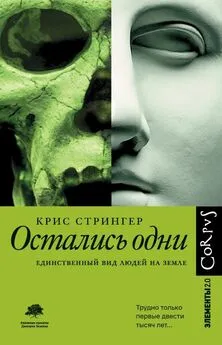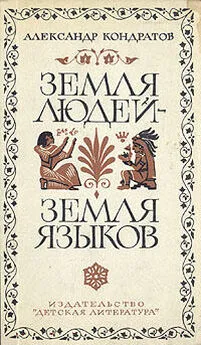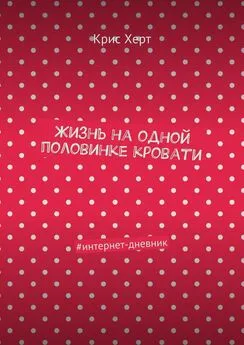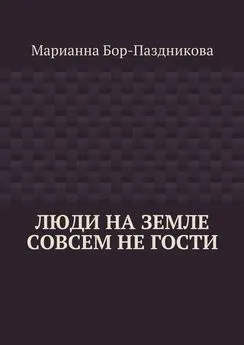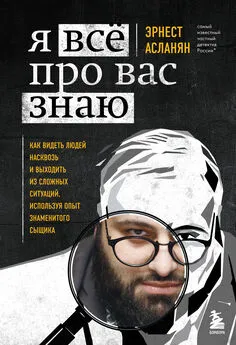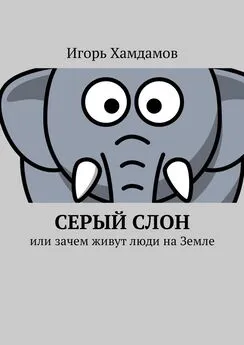Крис Стрингер - Остались одни. Единственный вид людей на земле
- Название:Остались одни. Единственный вид людей на земле
- Автор:
- Жанр:
- Издательство:Литагент Corpus
- Год:2021
- Город:Москва
- ISBN:978-5-17-982912-6
- Рейтинг:
- Избранное:Добавить в избранное
-
Отзывы:
-
Ваша оценка:
Крис Стрингер - Остались одни. Единственный вид людей на земле краткое содержание
Один из ведущих мировых специалистов, британский антрополог Крис Стрингер, тщательно собирает гигантский пазл, чтобы показать нам цельную картину: что на сегодняшний день известно науке о нас и о других представителях рода Homo, чего мы достигли в изучении своего эволюционного пути и куда движемся по нему дальше.
В формате PDF A4 сохранён издательский дизайн.
Остались одни. Единственный вид людей на земле - читать онлайн бесплатно ознакомительный отрывок
Интервал:
Закладка:
H. Valladas, J.-L. Joron, G. Valadas, B. Arensburg, O. Bar-Yosef, A. Belfer-Cohen, P. Goldberg et al. “Thermoluminescence dates for the Neanderthal burial site at Kebara in Israel”. Nature 330. 1987, 159–160.
M. Vanhaeren, F. d’Errico. “Aurignacian ethnolinguistic geography of Europe revealed by personal ornaments”. Journal of Archaeological Science 33. 2006, 1105–1128.
M. Vanhaeren, F. d’Errico, C. Stringer, S. James, J. Todd, H. Mienis. “Middle Paleolithic shell beads in Israel and Algeria”. Science 312. 2006, 1785–1788.
P. Villa. “On the evidence for Neanderthal burial”. Current Anthropology 30. 1989, 325–326.
I. Watts. “Was there a human revolution?” Radical Anthropology 4. 2010, 16–21.
R. White. Prehistoric Art: The Symbolic Journey of Humankind . Harry N. Abrams, New York, 2003.
R. White. “Systems of personal ornamentation in the Early Upper Palaeolithic: Methodological challenges and new observations”. In P. Mellars, K. Boyle, O. Bar-Yosef, C. Stringer, eds. Rethinking the Human Revolution , 287–302. McDonald Institute for Archaeological Research, Cambridge, 2007.
A. Whiten. “The place of ‘deep social mind’ in the evolution of human nature”. In C. Pasternak, ed. What Makes Us Human , 146–163. Oneworld Publications, Oxford, 2007.
A. Whiten, R. Hinde, C. Stringer, K. Laland, eds. Culture Evolves . Oxford University Press, Oxford, in press.
J. Wilkins. “Style, symboling, and interaction in Middle Stone Age societies”. Vis-a-vis: Explorations in Anthropology 10. 1. 2010, 102–125.
L. Wolpert. “Causal belief makes us human”. In C. Pasternak, ed. What Makes Us Human , 164–181. Oneworld Publications, Oxford, 2007.
J. M. Adavasio, O. Soffer, D. C. Hyland, J. S. Illingworth, B. Klima, J. Svoboda. “Perishable industries from Dolni Vĕstonice I: New insights into the nature and origin of the Gravettian”. Archaeology, Ethnology and Anthropology of Eurasia 2. 2001, 48–65.
L. C. Aiello, R. I. M. Dunbar. “Neocortex size, group size, and the evolution of language”. Current Anthropology 34. 2. 1993, 184–193.
R. D. Alexander. The Biology of Moral Systems . Aldine de Gruyter, New York, 1987.
N. Alperson-Afil, G. Sharon, M. Kislev, Y. Melamed, I. Zohar, S. Ashkenazi, R. Rabinovich, R. Biton, E. Werker, G. Hartman, C. Feibel, N. Goren-Inbar. “Spatial organization of hominin activities at Gesher Benot Ya’aqov, Israel”. Science 326. 5960. 2009, 1677–1680.
B. Aranguren, R. Becattini, M. Mariotti Lippi, A. Revedin. “Grinding flour in Upper Palaeolithic Europe. 25,000 years bp”. Antiquity 81. 314. 2007, 845–855.
T. D. Berger, E. Trinkaus. “Patterns of trauma among the Neandertals”. Journal of Archaeological Science 22. 1995, 841–852.
L. R. Binford. “Isolating the transition to cultural adaptations: An organizational approach”. In E. Trinkaus, ed. The Emergence of Modern Humans , 18–41. Cambridge University Press, Cambridge, 1989.
P. M. Bingham. “Human evolution and human history: A complete theory”. Evolutionary Anthropology 9. 6. 2000, 248–257.
S. Blaffer Hrdy. Mothers and Others: The Evolutionary Origins of Mutual Understanding . Harvard University Press, Cambridge, 2009.
J. R. E. Blais, C. Scheepers, C. Schyns, P. G., R. Caldara. “Cultural confusions show that facial expressions are not universal”. Current Biology 19. 18. 2009, 1543–1548.
S. Bowles. “Did warfare among ancestral hunter-gatherers affect the evolution of human social behaviors?” Science 324. 2009, 1293–1298.
R. Boyd, P. J. Richerson. “Group beneficial norms spread rapidly in a structured population”. Journal of Theoretical Biology 215. 2002, 287–296.
M. U. Brennan. “Health and disease in the Middle and Upper Paleolithic of south-western France: A bioarchaeological study”. Ph.D. diss., New York University, 1991.
K. S. Brown, C. W. Marean, A. Herries, Z. Jacobs, C. Tribolo, D. Braun, D. L. Roberts, M. C. Meyer, J. Bernatchez. “Fire as an engineering tool of early modern humans”. Science 325. 5942. 2009, 859–862.
A. Burt, R. L. Trivers. Genes in Conflict: The Biology of Selfish Genetic Elements . Belknap Press, Harvard, 2006.
D. M. Buss. Evolutionary Psychology: Th e New Science of the Mind . Allyn & Bacon, Boston, 1999.
D. M. Buss, ed. The Handbook of Evolutionary Psychology . Wiley, Hoboken, NJ, 2005.
M. Cartmill. “The human revolution(s)”. Evolutionary Anthropology 19. 2010, 89–91.
R. Caspari, S.-H. Lee. “Older age becomes common late in human evolution”. Proceedings of the National Academy of Science USA 101. 2004, 10895–10900.
B. Chapais. Primeval Kinship: How Pair-bonding Gave Birth to Human Society . Harvard University Press, Cambridge, MA, 2008.
N. Chomsky. Language and Mind . Harcourt Brace Jovanovich, New York, 1968.
S. E. Churchill, R. G. Franciscus, H. A. McKean-Peraza, J. A. Daniel, B. R. Warren. “Shanidar 3 Neandertal rib puncture wound and paleolithic weaponry”. Journal of Human Evolution 57. 2009, 163–178.
S. E. Churchill, J. A. Rhodes. “The evolution of the human capacity for ‘killing at a distance’”. In J.-J. Hublin, M. P. Richards, eds. The Evolution of Hominin Diets: Integrating Approaches to the Study of Palaeolithic Subsistence , 201–210. Springer, Dordrecht, 2009.
M. Corballis, T. Suddendorf. “Memory, time, and language”. In C. Pasternak, ed. What Makes Us Human? 17–36. Oneworld Publications, Oxford, 2007.
R. A. Dart. “The predatory transition from ape to man”. International Anthropological and Linguistic Review 1. 1953, 201–217.
R. Dawkins. The Selfish Gene . Oxford University Press, Oxford, 1976.
F. d’Errico, J. Zilhao. “A case for Neandertal culture”. Scientific American 13. 2003, 34–35.
S. B. Eaton, M. Shostak, M. Konner. The Paleolithic Prescription: A Program of Diet, Exercise and a Design for Living . Harper & Row, New York, 1988.
C. Finch. “Evolution of the human lifespan and diseases of aging: Roles of infection, inflammation, and nutrition”. Proceedings of the National Academy of Sciences USA 107. supplement 1. 2010, 1718–1724.
K. Flannery. “Origins and ecological effects of early domestication in Iran and the Near East”. In P. J. Ucko, G. W. Dimbleby, eds. The Domestication and Exploitation of Plants and Animals , 73–100. Aldine, Chicago, 1969.
J. A. Fodor. LOT 2 : The Language of Thought Revisited . Oxford University Press, Oxford, 2008.
R. Fox. Kinship and Marriage: An Anthropological Perspective . Cambridge University Press, Cambridge, 1996.
W. Froehle, S. E. Churchill. “Energetic competition between Neandertals and anatomically modern humans”. PalaeoAnthropology. 2009, 96–116.
R. H. Gargett. “Middle Palaeolithic burial is not a dead issue: The view from Qafzeh, Saint Cesaire, Kebara, Amud, and Dederiyeh”. Journal of Human Evolution 37. 1. 1999, 27–90.
M. Germonpre, M. V. Sablin, R. E. Stevens, R. E. M. Hedges, M. Hofreiter, M. Stiller, V. R. Despres. “Fossil dogs and wolves from Palaeolithic sites in Belgium, the Ukraine and Russia: Osteometry, ancient DNA and stable isotopes”. Journal of Archaeological Science 36. 2009, 473–490.
J. Goodall. Through a Window: 30 Years Observing the Gombe Chimpanzees . Weidenfeld & Nicolson, London, 1990.
A. Gracia, J. L. Arsuaga, I. Martinez, C. Lorenzo, J. M. Carretero, J. M. Bermudez de Castro, E. Carbonell. “Craniosynostosis in the Middle Pleistocene human Cranium 14 from the Sima de los Huesos, Atapuerca, Spain”. Proceedings of the National Academy of Sciences USA 106. 16. 2009, 6573–6578.
W. D. Hamilton. “The evolution of social behavior”. Journal of Theoretical Biology 1. 1964, 295–311.
K. Hawkes, J. F. O’Connell. “How old is human longevity?” Journal of Human Evolution 49. 2005, 650–653.
A. G. Henry, A. S. Brooks, D. R. Piperno. “Microfossils in calculus demonstrate consumption of plants and cooked foods in Neanderthal diets. Shanidar III, Iraq; Spy I and II, Belgium”. Proceedings of the National Academy of Sciences USA 108. 2011, 486–491.
T. Higham, R. Jacobi, M. Julien, F. David, L. Basell, R. Wood et al. “Chronology of the Grotte du Renne. France and implications for the context of ornaments and human remains within the Chatelperronian”. Proceedings of the National Academy of Sciences USA 107. 2010, 20234–20239.
A. Keith. A New Theory of Human Evolution . Watts, London, 1948.
R. C. Kelly. Warless Societies and the Origin of War . University of Michigan Press, Ann Arbor, 2000.
R. Kittler, M. Kaysar, M. Stoneking. “Molecular evolution of Pediculus humanus and the origin of clothing”. Current Biology 13. 2003, 1414–1417.
S. L. Kuhn, M. C. Stiner. “What’s a mother to do? The division of labor among Neandertals and modern humans in Eurasia”. Current Anthropology 47. 2006, 953–980.
E. Kvavadze, O. Bar-Yosef, A. Belfer-Cohen, E. Boaretto, N. Jakeli, Z. Matskevich, T. Meshveliani. “30,000-year-old wild flax fibers”. Science 325. 5946. 2010, 1359.
J. T. Laitman, J. S. Reidenberg. “The evolution of the human larynx: Nature’s great experiment”. In M. P. Fried, A. Ferlito, eds. The Larynx , 19–38. Plural, San Diego, 2009.
P. Lieberman. “The evolution of human speech”. Current Anthropology 48. 2007, 39–66.
J. E. Light, M. A. Toups, D. L. Reed. “What’s in a name? The taxonomic status of human head and body lice”. Molecular Phylogenetics and Evolution 47. 2008, 1203–1216.
J. Mercader. “Mozambican grass seed consumption during the Middle Stone Age”. Science 326. 2009, 1680–1683.
A. Miklosi. Dog Behaviour, Evolution, and Cognition . Oxford Biology, Oxford, 2007.
S. Mithen. “Music and the origin of modern humans”. In P. Mellars, K. Boyle, O. Bar-Yosef, C. Stringer, eds. Rethinking the Human Revolution , 107–120. McDonald Institute for Archaeological Research, Cambridge, 2007.
S. Mithen. The Prehistory of the Mind . Thames & Hudson, London, 1996.
J. Moore. “The evolution of reciprocal sharing”. Ethology and Sociobiology 5. 1984, 5–14.
S. Pinker. The Language Instinct . Morrow, New York, 1994.
D. R. Piperno, E. Weiss, J. Holst, D. Nadel. “Processing of wild cereal grains in the Upper Palaeolithic revealed by starch grain analysis”. Nature 430. 2004, 670–673.
R. C. Preece, J. A. J. Gowlett, S. A. Parfitt, D. R. Bridgland, S. G. Lewis. “Humans in the Hoxnian: Habitat, context and fire use at Beeches Pit, West Stow, Suffolk, UK”. Journal of Quaternary Science 21. 2006, 485–496.
D. L. Reed, J. E. Light, J. M. Allen, J. J. Kirchman. “Pair of lice lost or parasites regained: The evolutionary history of anthropoid primate lice”. BioMedCentral Biology 5. 2007, 7.
D. L. Reed, V. S. Smith, S. L. Hammond, A. R. Rogers, D. H. Clayton. “Genetic analysis of lice supports direct contact between modern and archaic humans”. PLoS Biology 2. 2004, 1972–1982.
Читать дальшеИнтервал:
Закладка:
